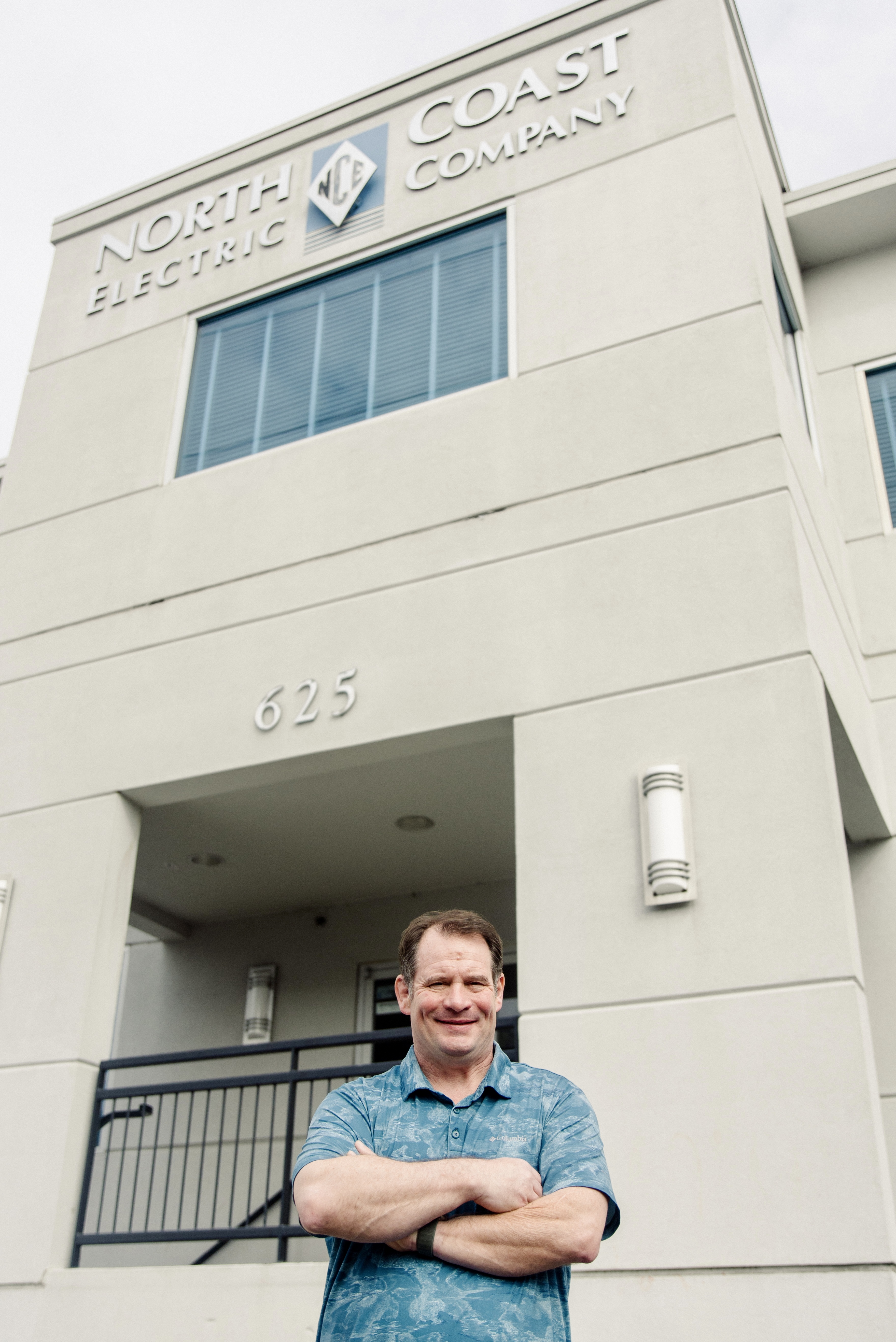A Q&A with Neil Schilling, the Division Manager for Energy Solutions at North Coast Electric, on how he prioritizes lowering the total cost of ownership for facility owners and has doubled his specifications involving Luminaire Level Lighting Controls (LLLC) over the past several years.

You have a number of foundational clients. How does LLLC play into their energy efficiency projects?
My team provides a range of services for the clients we regularly engage with in person and onsite, from thorough on-location checks to managing the details of scope development, labor, and budgeting for materials. Our role goes beyond project management, because we act as coordinators and ensure utility incentives align smoothly with our clients’ goals. We also work closely with our electrical contractor partners, not just as suppliers, but as an extended project management team.
It’s a teamwork situation where our experience becomes a shared asset, steering projects toward efficiency, and that’s where LLLC comes in. The system’s advantages help us deliver what we strive to provide for our clients: labor savings, a high level of product control, and accessible configuration.
Every project in this setup, whether in a single building or a dynamic classroom, can effortlessly include LLLC. In what I call the “renovation market,” especially with older buildings from the late 1800s, LLLC emerges as an unsung hero. It simplifies the complexities of low voltage cable systems in historical structures, making it easier to manage luminaires and controls with no extra complications. LLLC is not just a solution, but a shift toward streamlined processes and improved project adaptability.
What specifically makes LLLC a turnkey solution?
With LLLC, the facility manager or building owner has a reliable and flexible system they can operate from their fingertips. After the procurement and installation process is completed, the client can pull out their phone and essentially “turn the key” on their new product.
This not only translates to substantial labor savings during luminaire installation—it also removes the need for a commissioning process. In the past, companies had to engage engineering firms and navigate through lighting control panels for a month to achieve commissioning. However, with LLLC, you can complete this through a smartphone, instantly and seamlessly.
More technically speaking, this transition empowers us to provide transparent, real-time data on various facets of lighting, encompassing total lighting load, energy consumption, load shedding strategies, scenes, time clock functions, space optimization, and the status of luminaires. LLLC has become the backbone of our operations because it supports the process of integration and provides end user data. We can even monitor scheduled maintenance, identifying potential issues with circuits, batteries, or other essential functions. This level of insight, previously limited to BACnet systems with HVAC, creates an interconnected and efficient lighting ecosystem, and it’s changing the way we interact with and manage our lighting infrastructure.

What are some projects you are specifying LLLC? Is it a better solution for particular types of clients?
The benefits of an LLLC system make it an ideal solution for many different clients. My specifications break down into two buckets: industrial and commercial.
With industrial clients, our focus on LLLC extends to high bay applications, particularly in manufacturing plants, whether it’s food, microchips, or other products. The integration with Programmable Logic Controllers (PLCs) and Motor Control Centers (MCCs) is pivotal. For instance, in food manufacturing, we link high bay lights to PLCs governing processes, like robotic operations in cookie production. This not only ensures operational efficiency, but it also serves as a critical alert system. If a conveyor motor fails in an automated plant, lights can blink or trigger alerts, preventing efficiency issues like product piling up without human intervention.
On the commercial side, LLLC offers a unique flexibility that caters to the various sensitivities of occupants. Unlike traditional lighting systems, LLLC allows us to customize and tailor lighting based on specific areas or applications, be it a classroom or a laboratory. This level of customization extends from the building area to individual rooms, acknowledging the uniqueness of each space.
Shifting from legacy lighting to LEDs and LLLC is literally putting power and control back in the hands of the customer. Unlike the limitations of legacy lamps, LLLC empowers us not only to change colors but also to adjust lumens dynamically, providing a level of adaptability and control that was previously unattainable. By implementing LLLC in commercial and industrial settings, we have provided our clients with a revolutionary method for managing lighting and enhancing user experience.
How do you help your clients pitch LLLC to their executive offices and supervisors?
When making a value proposition, it’s about presenting a choice. They can either opt for a costly service upgrade or embrace a more efficient lighting and control system. With LLLC, not only do we offer load shedding capabilities, but we also provide monthly reports. This gives them insights into lighting as well as other systems, for example, their HVAC system. It’s a transformative conversation that needs to happen at the decision-maker level.
There are some facility professionals out there who are used to outdated technologies. They’ve lived in a world of gas-based lamps and antiquated wall-mounted occupancy sensors. The key for them is education—bridging the gap between the familiarity of the past and the possibilities of the future.
Showing them what LLLC can do, whether it is a walk-through of completed project or a live demonstration, becomes a powerful tool in this context, allowing them to visualize and experience firsthand the benefits and capabilities of LLLC. This approach not only helps them understand the technology but also recognizes how it empowers them in running their businesses more efficiently.
How do you see LLLC in the future of your business?
The future is here. LLLC has come a long way over the last few years. It’s a cost-effective technology eligible for utility incentives. But here’s the thing—those incentives won’t last forever, and the energy landscape is evolving.
Anticipating energy code changes and forming strategic partnerships with utilities will be essential for future success. For facility owners, especially those with multi-site operations, the key lies in acting now rather than waiting for incentives to wane. By crafting a thoughtful strategy and leveraging available incentives, businesses like ours can position themselves for the years to come. LLLC will continue to play a central role, bringing efficiency, adaptability, and cost-effectiveness to the forefront of our operations.
